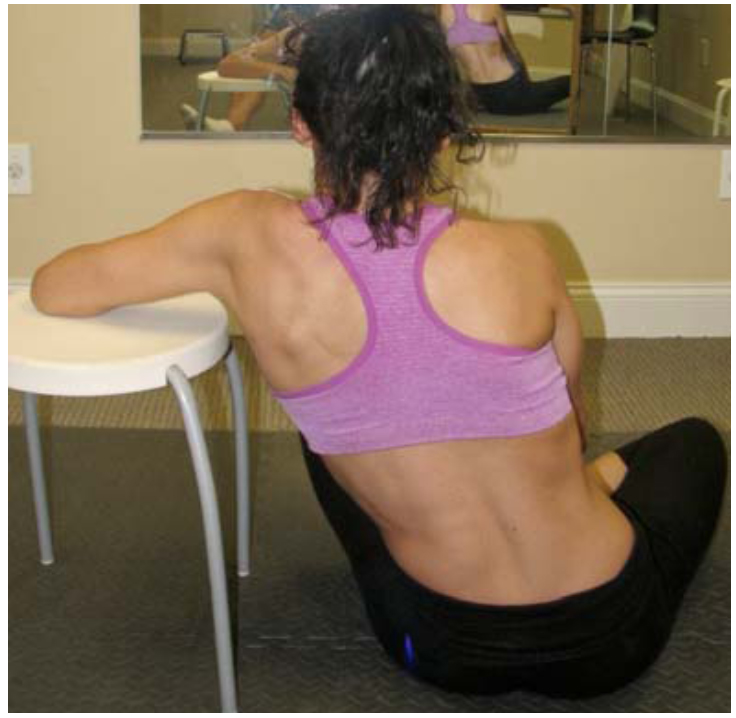We have been involved in Schroth exercise for adolescent idiopathic scoliosis since 2002. The following post summarizes an important study on Schroth exercise that was published a few years back.
This valuable study, entitled, ‘The efficacy of Schroth’s 3-dimensional exercise therapy in the treatment of adolescent idiopathic scoliosis in Turkey’ is authored by Saadet Otman, PT, PhD, Nasire Kose, PT, PhD, and Tavuz Yakut, PT, PhD. It highlights the results from a Schroth outpatient rehabilitation program for adolescents in Turkey conducted to determine the effectiveness of Schroth exercise for adolescent idiopathic scoliosis.
The study participants used Schroth exercise, exclusively –no participant used a scoliosis brace. Instruction took place at a physical therapy and rehabilitation school from 1999 – 2004.
Participants learned Schroth exercise and participated in the outpatient program for 5 days/week for 4 hours/day for 6 weeks. After the initial 6 weeks, participants were instructed to practice their individual Schroth exercise routine at home. The study began with 68 patients and ended with 50.
Schroth exercise is based on three-dimensional principles incorporating proprietary techniques prescribed specifically for each individual’s scoliosis curve pattern. The program described is comparable to the outpatient program we use here at Scoliosis 3DC® for adolescent idiopathic scoliosis.
Results from the study showed patients experienced a decrease in Cobb angles after the initial six weeks of scoliosis exercise, from an average of 26º to 23º, then a reduction to 19º after 6 months and 18º after one year. Vital capacities increased on average by 15%.

Although our methods most likely vary slightly from the Turkish program (our program is usually a four-day intensive with a significant amount of education, postural modification training, simplified and other Schroth exercises specific to patient needs). We have since published a paper that documents our patients vital capacity change in just one week of Schroth method outpatient training. Link here to our paper to see those results: The Influence of Short-Term Scoliosis-Specific Exercise Rehabilitation on Pulmonary Function in Patients with AIS.
The Turkish study tested strength in the muscles to the right and left of the spine as well as the back extensor and anterior trunk flexor muscles. All muscle groups experienced increased strength. Postural defects improved as well.
Due to the brief nature of our study, we didn’t monitor the Cobb angle change. In the Turkish study, however, with six weeks of intensive outpatient care, the Cobb angle remained stable in just one patient. All others experienced improvement and none got worse. After one year, all patients experienced improvement to some degree. Regarding Schroth exercise, the article concludes, “Clearly, this program is useful in AIS patients if they are compliant.” Overall, “Schroth’s technique positively influenced Cobb angle, vital capacity, strength and postural defects in outpatient adolescents.”
In addition, if you are interested in reading about one our patient’s experiences (in detail), we published a case study on a 15-year-old scoliosis patients who, at a Risser 4, succeeded in reducing her spinal curvature through scoliosis exercise alone. Link here to read our paper, Cobb Angle Reduction in a Nearly Skeletally Mature Adolescent (Risser 4) After Pattern-Specific Scoliosis Rehabilitation (PSSR).
To learn more about our comprehensive Schroth method scoliosis exercise program, please call us for more information. We customize our Schroth immersion program (the way it’s taught in Germany) for you or your child. Patients learn skills needed to combat scoliosis progression for their unique curve pattern, on a one-to-one basis, over a just a few days (usually only four days!). Each patient receives a personalized binder with their own exercise instructions and a digital link to a custom-created narrated video with all elements of their program from start to finish! Once patients return home everything is there to put their newfound scoliosis management skills into practice!
Updated, February 4, 2025..

